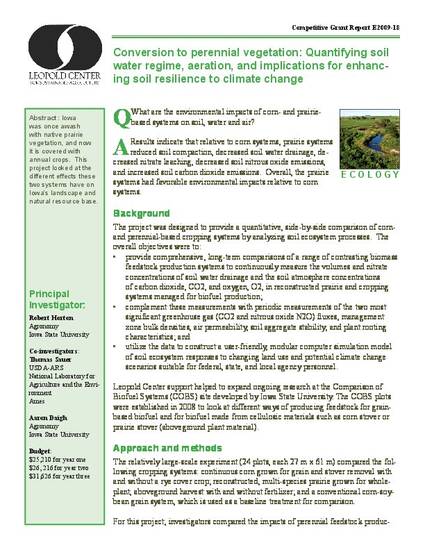
Article
Conversion to perennial vegetation: Quantifying soil water regime, aeration, and implications for enhancing soil resilience to climate change
Leopold Center Completed Grant Reports
Project ID
E2009-18
Abstract
Iowa was once awash with native prairie vegetation, and now it is covered with annual crops. This project looked at the different effects these two systems have on Iowa's landscape and natural resource base.
Key Question
What are the environmental impacts of corn- and prairie-based systems on soil, water and air?
Findings
Results indicate that relative to corn systems, prairie systems reduced soil compaction, decreased soil water drainage, decreased nitrate leaching, decreased soil nitrous oxide emissions, and increased soil carbon dioxide emissions. Overall, the prairie systems had favorable environmental impacts relative to corn systems.
Principal Investigator(s)
Robert Horton
Co-Investigator(s)
Thomas Sauer, Aaron Daigh
Year of Grant Completion
2012
Disciplines
Citation Information
Robert Horton, Thomas J. Sauer and Aaron Lee Daigh. "Conversion to perennial vegetation: Quantifying soil water regime, aeration, and implications for enhancing soil resilience to climate change" (2012) Available at: http://works.bepress.com/robert-horton/13/
